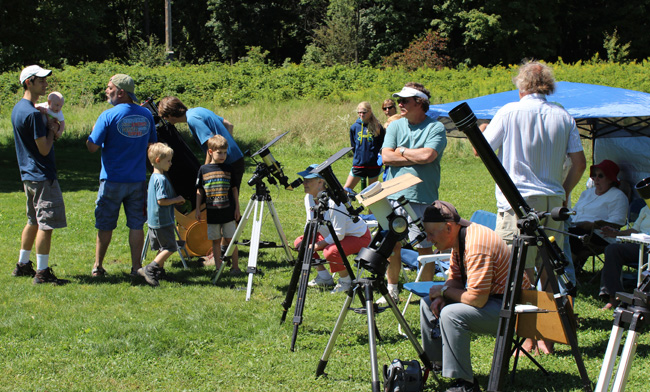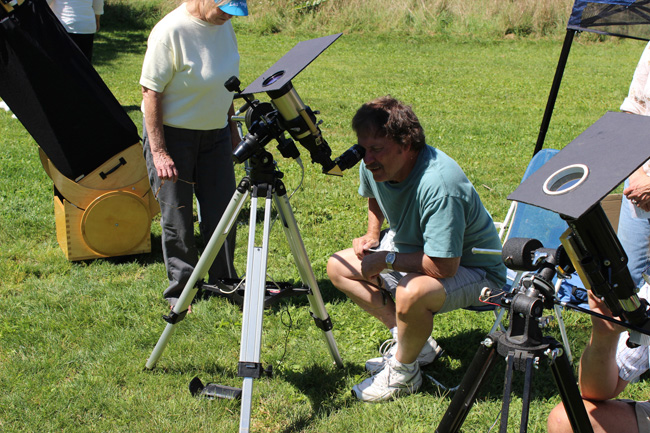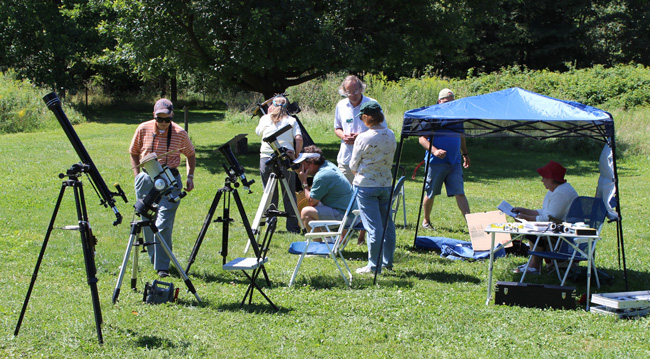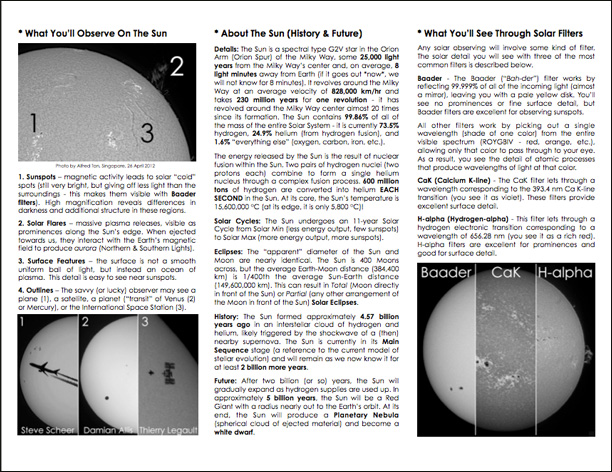Greetings fellow astrophiles!
After a rather unimpressive nighttime session the night before (because of cloud cover, that it), Bob Piekiel’s Saturday afternoon Solar Session at Baltimore Woods most definitely impressed the +20 attending observers. Bob brought the proverbial “kitchen sink” of personal solar equipment, including a Coronado SolarMax 90 CaK Solar Telescope, a SolarMax II 90 H-alpha Telescope, and a small refractor with a clip-on Baader filter.

Observers around the Coronado scopes. Click for a larger view.
As discussed in the CNYO brochure A Guide For Solar Observing, we have to use filters to observe the Sun safely. Anyone who’s looked directly at the Sun can attest to the fact that it is very difficult on the eyes (and unless you need to sneeze, why would you do that anyway?). Under magnification, this major discomfort turns into instant and permanent damage to your retina as that very bright light is concentrated in the optics into a sharp beam of considerable burning power. A video of Bob demonstrating this at the previous Solar Observing Session in August is included below.
The three scopes make the Sun observable either by reflecting nearly all of the light (Baader) or by only letting a small amount of a very specific (or narrow) wavelength in (CaK, H-alpha). The views you get through the three different filters are shown below.
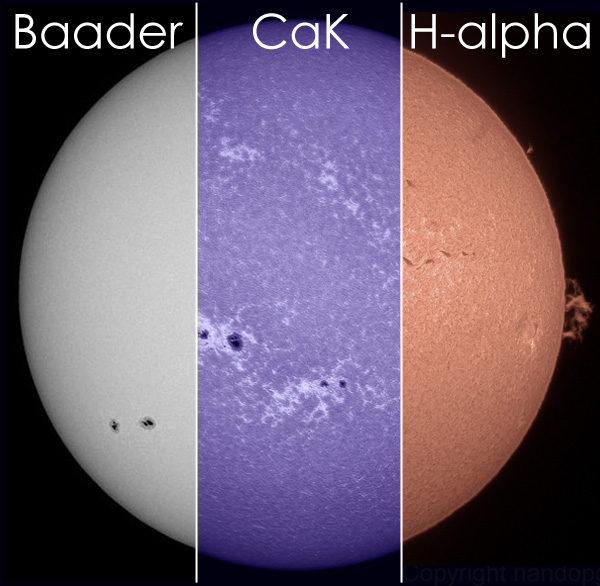
The Sun in Baader, CaK, and H-alpha filters.
Baader – knocks down the Sun’s brightness by +99.99% across all wavelengths, making it excellent for looking at Sunspots (which are slightly darker than the rest of the surface normally, so dimming the brightness uniformly reveals them as dark spots).
CaK – lets through a very specific line in the calcium spectrum. You only observe the light from the relatively few calcium ions in the Sun’s atmosphere, providing you excellent surface detail (much more than the Baader filters do, but at the cost of less definition in the sunspot features because of all of the additional detail).
H-alpha – lets through a very specific line in the spectrum of the most abundant element in the Sun – Hydrogen. These filters provide surface detail, but are prized more for their ability to observe prominences along the Sun’s edge.
The views on this very clear day were all excellent despite the wind gusts that scattered the Sun blocks around. In the downtime between attendees, I managed to capture two images with my iPhone. The first (less interesting) one is of a prominence in the bottom of the eyepiece in a very over-exposed image:
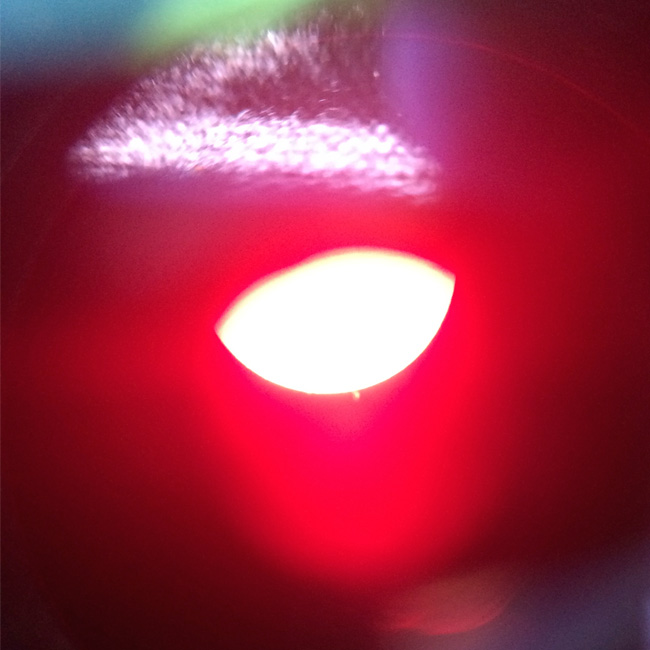
The Sun in H-alpha through a Coronado with an iPhone. Click for a larger view.
The second one is much more interesting. The image of the Sun through the CaK filter is a rich aqua blue. Something about either the glass or the detector in the iPhone produced the light pink/purple image below, which shows all of the detail one might observe in the Baader filter (but missing any additional surface detail that the CaK filter provides to someone observing without a smartphone).
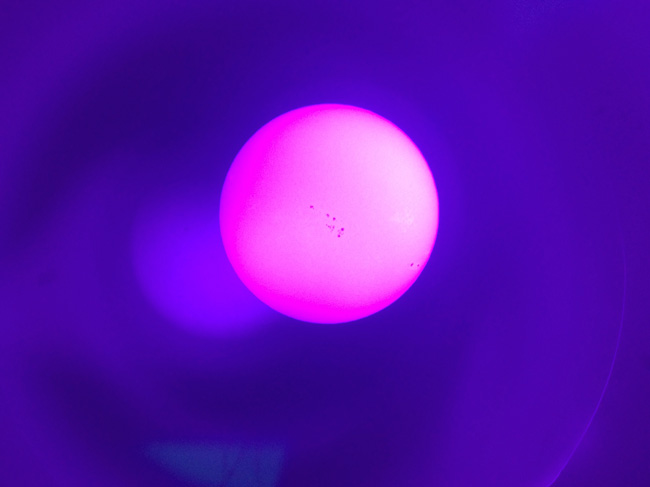
The Sun in CaK through a Coronado with an iPhone (better). Click for a larger view.
If you’ve not had the chance to observe our closest star in detail, consider attending a future solar session!

